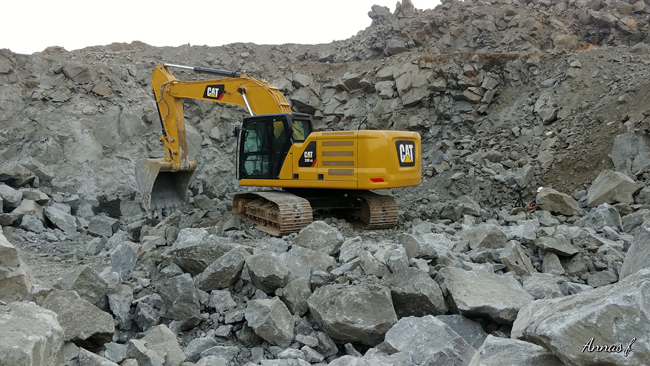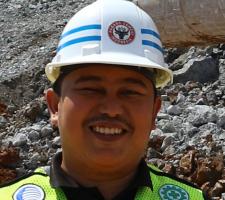
Southeast Asia’s largest economy, Indonesia, offers exciting commercial opportunities for international and regional building material suppliers and quarrying equipment manufacturers. Guy Woodford reports
After his May 2019 re-election as president of Indonesia, Joko Widodo has been keen to continue delivering on his commitment to green-lighting well over US$400 billion-worth of new public works projects.
As a
Today, Indonesia is the world’s fourth most populous nation, the world’s 10th largest economy in terms of purchasing power parity, and a member of the G-20. Described by the World Bank as an ‘emerging middle-income country’, the highly respected international financial institution has praised Indonesia for its enormous gains in poverty reduction, cutting the poverty rate by more than half since 1999, to 9.8% in 2018.
The World Bank April 2019 report adds: “Despite heightened global uncertainty, Indonesia’s economic outlook continues to be positive, with domestic demand being the main driver of growth. Supported by robust investment, stable inflation, and a strong job market, Indonesia’s economic growth is forecast to reach 5.2% in 2019.”
According to GlobalData’s May 2019 report Construction in Indonesia – Key Trends and Opportunities to 2023, the Indonesian construction industry continues to expand at a fast pace, driven mainly by the government’s continued investment in energy and transport infrastructure. It registered an annual growth rate of 6.1% in real terms in 2018.
The industry’s output value is expected to continue to expand at a healthy rate over the forecast period (2019–2023), with investments in housing, transport and tourism infrastructure projects continuing to drive growth. In the 2019 budget, the government increased its total spending on transport infrastructure from IDR410.7 trillion (US$28.8 billion) in 2018 to IDR415 trillion (US$29.1 billion) in 2019. GlobalData says the focus on developing local energy resources is also expected to drive industry growth, thus further increasing demand for construction and quarrying equipment. The government aims to produce 114GW of power by 2024 and 430GW of power by 2050, to meet the rising electricity demand of the country.
The total construction project pipeline in Indonesia – as tracked by GlobalData and including all megaprojects with a value above US$25 million – stands at a staggering IDR9 quadrillion (US$630.9 billion). The pipeline, which includes all projects from pre-planning to execution, is well balanced, with 50.8% of the pipeline value being in projects in the pre-execution and execution stages as of May 2019.
Given the above glowing endorsements of Indonesia’s economic health and construction sector vibrancy, few are sceptical that President Widodo will fail to make good on his huge public works spending promise. This creates greater certainty among buyers of building materials and quarrying equipment, who are increasingly looking to invest in premium plant brands.
U.S. quarrying, mining and construction equipment giant
Speaking about the country’s current aggregates demand, Annas Fadly, Indonesia territory sales manager, Global Construction & Infrastructure division, Caterpillar, says: “Over the last five years demand has been increasing, driven by massive projects in construction and infrastructure from both the government and the private sector. The impetus for construction in Indonesia can be attributed in large part to the new government’s push to accelerate the projects such as the Trans-Sumatera toll road and toll roads across Java, the Jakarta Mass Rapid Transit (MRT), the Jakarta Light Rail Transit (LRT), the new Jakarta airport, the new Priok port (also known as Kalibaru port) which will more than triple annual capacity of Tanjung Priok when fully operational in 2023, various dams and irrigation projects, and public housing.”
Fadly says that future Indonesian aggregates demand is at least likely to be comparable to current levels and may be slightly higher, due to the number of government and privately-funded infrastructure projects, including housing and office space, still to be completed.
Turning his attention to trends among Indonesian quarrying equipment customers, Fadly continues: “The majority of them are retail customers, and most use a 20-tonne excavator with hammer for primary breaking, and 10-tonne trucks. Other customers use blasting and hammer only for secondary blasting, preferring 20 – 30-tonne excavators. Big players from the cement companies or subsidiary companies of state-owned enterprises (SOEs) operate larger equipment and take advantage of the available on- and off-board technology.”
The Indonesian government, says Fadly, has put in place new regulations and policies around the extraction of minerals including sand, lime, marble, granite and andesite. “In the past, mining licences were issued by the regional government, now all the new licences are granted by the Ministry of Energy and Mineral Resources of Indonesia.
“Unfortunately, with such high demand, illegal mining and quarrying of construction materials remains a challenge for the government and it is taking its toll on the environment. However, with more vigilant enforcement of new regulations and policies, we can expect curbing of the level of environmental degradation.”
Gerrit Lambert, sales director for Volvo CE Indonesia, is another senior OEM figure with confidence in future Indonesian aggregates demand.
“Demand is forecasted to grow further. Infrastructure development is on the rise, especially highway projects, airports and ports. Therefore, to support this infrastructure development, there is a high demand for aggregates. Our 20- to 40-tonne range excavators such as the EC210D, EC350DL and EC480DL are well suited to meet Indonesian aggregates demand,” explains Lambert. “As aggregates demand increases, it means a brighter future ahead for Volvo CE.”
Citing another example of Volvo CE’s current presence in the Indonesian market, Lambert notes how contractor Mutiara Batang Toru CV, is using Volvo EC200D excavators to help construct a road in a challenging rainforest landscape for a new hydroelectric plant in North Sumatra. “Both the Volvo EC200D excavators can move over 800 tonnes of aggregates every day to complete road works within a tight schedule,” he explains.
Lambert adds: “The road construction sector has been very much underdeveloped in the past, therefore more roads are now needed to meet the population growth. Port projects in the Indonesian government are also on the rise. And all these developments require aggregates.
“To meet the future market needs, Volvo CE is ensuring that our machines are accessible to customers as we continue to improve our dealer network.
“On the product front, we offer Volvo breakers, which are designed to handle the toughest breaking jobs in mining, quarrying, demolitions and construction. Volvo breakers are our customers’ top choice when it comes to working in tough applications like stone quarries.”
Lambert highlights how a major expansion of the country’s road network is part of the Indonesian government’s plans to accelerate economic growth. He notes how several Sumatran contractors are using Volvo CE machines on one of the largest projects – the upgrade of the Trans-Sumatran Highway.
“PT Rodateknindo Purajaya and PT Baniah Rahmat Utama are using a collection of our machines to work on their respective stretches. The contract for the Trans-Sumatran Highway is the largest of seven road projects the company is currently working on. The company has seven Volvo CE units on the job, including three compactors, two excavators, a paver and a wheeled loader.”
Lambert says Indonesian quarries are getting bigger, generating a need for bigger equipment. “As such, the demand for continuous high production and low cost per tonne is on the rise. Customers are more interested in lower fuel consumption equipment and Volvo CE machines are well known for that,” he concludes.










